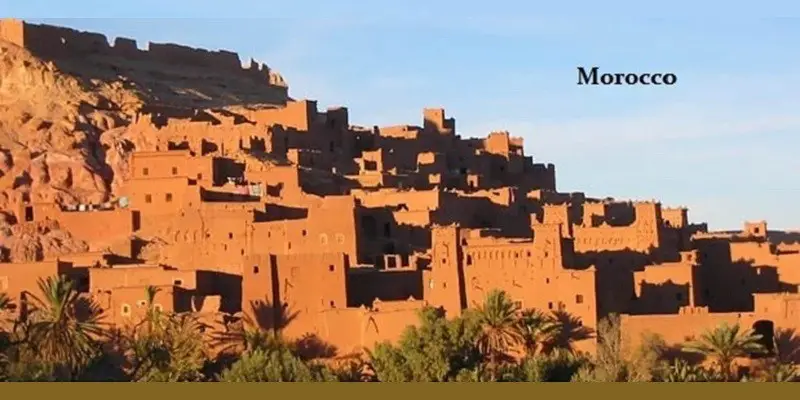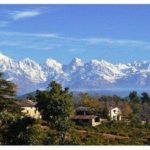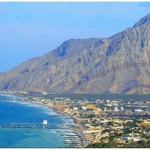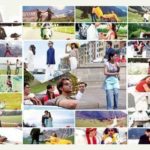
Marrakech in Morocco has a vibrant arts and culture scene and attract thousands of artists, musicians, and performers from around the world.
Morocco is a popular destination for foreign photographers as well as filmmakers due to its exotic landscapes, culture and the affordable technical talent.
Besides, Morocco’s desert locations can double for several Middle Eastern trouble spots. In the past, several classic Hollywood movies – such as Lawrence of Arabia, Gladiator, The Mummy Returns, Hidalgo, Kundun and Prince of Persia – have been filmed in Morocco.
Marrakech International Film Festival
The Marrakech International Film Festival is an international film festival founded in 2001 and held annually in Marrakech, Morocco. It celebrates the best in Arabic and African film and cinema.
In recent years, the Marrakech International Film Festival has become a high profile festival (with Morocco becoming a much sought-after filming destination) that attracts top national and international actors, producers, film makers and directors.
Marrakech, popular for its story-tellers, acrobats, dancers and musicians, has turned out to be a great venue for a film festival. And unlike the Cannes or Berlin film festivals, the Marrakech Film Festival is more relaxed and less crowded (less rushed).
Marrakech School of Visual Arts (ESAV)
One of the leading film schools in Africa is Marrakech’s School of Visual Arts. It offers hands-on training to students, and gets top film industry professionals to conduct workshops in the school throughout the year.
At the end of the course, students are equipped with the right tools that enables them to find a job in the industry when they leave the school.
About 20 Moroccan films are made every year (via public funding), which generates a number of technical jobs.
The students also go on to work on Television. Several series and documentaries are produced in Morocco every year, especially ahead of Ramadan, when people stay home and watch a lot of series, so that’s a busy time of year.
“Where do I see myself in five years? I see myself making films, because there’s still a lot to do, in the cultural field. We are increasingly aware, especially here in Africa, that culture will play a big role, be it economically or in the fight against extremism everywhere. Culture has an important role to play,” Inoussa Baguian from Burkina Faso is in his final year.
MIMOSAS co-producer Lamia Chraibi set to produce Moroccan filmmaker Narjiss Nejjar’s APATRIDE https://t.co/UhAddwMAes #film #movies
— Charles Trotter (@charlestrotter) December 9, 2016
Group of students working on under the direction of Belgian Director of Photography Michel Houssiau trying to recreate a 17th century painting by Francesco Cairo, ‘St Sebastien Healed by St Irene’.
“Our starting point with this workshop is not to give the students free rein, but on the contrary to take the painting as a point of reference and to say we are going to reproduce it, we’re going to reproduce this image, so there is the question of light, of costumes, of hair and of make-up of course, as well as the décor. The idea is to reproduce everything that’s in front of the camera lens,” he explained.
Marrakech Museum for Photography and Visual Arts
The Marrakech Museum for Photography and Visual Arts (MMPVA) is a non-profit institution dedicated to exhibiting the best of Moroccan & international lens-based and contemporary arts.
You will find nice historical pics of people and environments (some are more than a century old). Its definitely worth a visit if you’re passionate about photography.
You will find an impressive collections of old photos, especially portraits. You also get to learn about the history of photography (besides learning about the history of Morocco) as you get to see several photographs of Morocco in the early days of photography.
Watch: The Marrakech Museum of Photography and Visual Arts (MMPVA). Short interview with the cultural director of the MMPVA
The museum building itself is so beautiful (you will like the architecture and the colors). And you get an excellent view of the city from the terrace. The food at the cafe (located at the top) is also quite good.
The Marrakech Museum for Photography and Visual Arts is definitely a must see if you’re in the city of Marrakech.
Website: mmpva.org
Marrakech to become photography’s Global HQ
Marrakech may seem an unlikely place to build one of the biggest photography galleries in the world – but that is what is scheduled to happen in the next couple of years (the scheduled date was 2016). The museum will house an extensive permanent collection of photography from the 19th century to the present day, as well as hosting contemporary exhibitions by photographers from Africa and around the globe.
Until the museum opens, the El Badi Palace, a stately ruin that originally housed Ahmad al-Mansur, the sultan of the Saadi dynasty, will be the focal point of all things photographic in the city.
Because the current site has been attracting local people in large numbers, the site of the proposed museum has been moved from outside the old city to the heart of the medina, where people gather.
Although photographers and filmmakers around the world may be intrigued by Marrakech, its actually not a city known for the arts. For most local people, photography usually means intrusive presence of tourists with digital cameras in search of local colour.
Last year, when Marrakech Museum for Photography and Visual Art (MMPVA) hosted an exhibition that featured a group show by Moroccan artists and an exhibition by five photographers from the renowned Magnum agency, the resulting review was headlined Marrakech: the city that distrusts photographers.
“To the average Moroccan, a gallery is a forbidding place. It is seen as a cultural palace for the rich and the educated, an elite establishment. It may be a hangover from colonial times, but people feel that they don’t belong there. Morocco is changing, though, but slowly. The museum could be crucial in shifting those attitudes and challenging those kinds of views.”
Chief among them was the locals’ utter aversion to being photographed. One man admonished Goldberg for taking a picture of his horse, shouting: “No! Stop! My horse does not want to be photographed.”
Then there was this furore in the gallery when a local woman berated her sister for posing for a portrait by Meiselas.
Everything is very complex here when it comes to making a photograph of a woman,” said Leila, one of Meiselas’s local assistants. “The husbands or a family member could object … People are afraid about who will see the image, how it will be used.”
Marrakech is a place with a rich oral culture but no real photographic history. It seems that the curating of photography in a museum in Marrakech could, if not handled sensitively, have many unintended consequences, which the curators are aware of.
“We need to be confident in the work we put on the walls and confident that we can explain the issues around a potentially controversial image. We need to explain that this is also what photography does – it creates debate.”
And that will almost certainly be the case when the Marrakech Museum of Photography and Visual Art finally opens its doors in the teeming medina.
Watch: Photobook Morocco, showcases the work of Moroccan photographers







